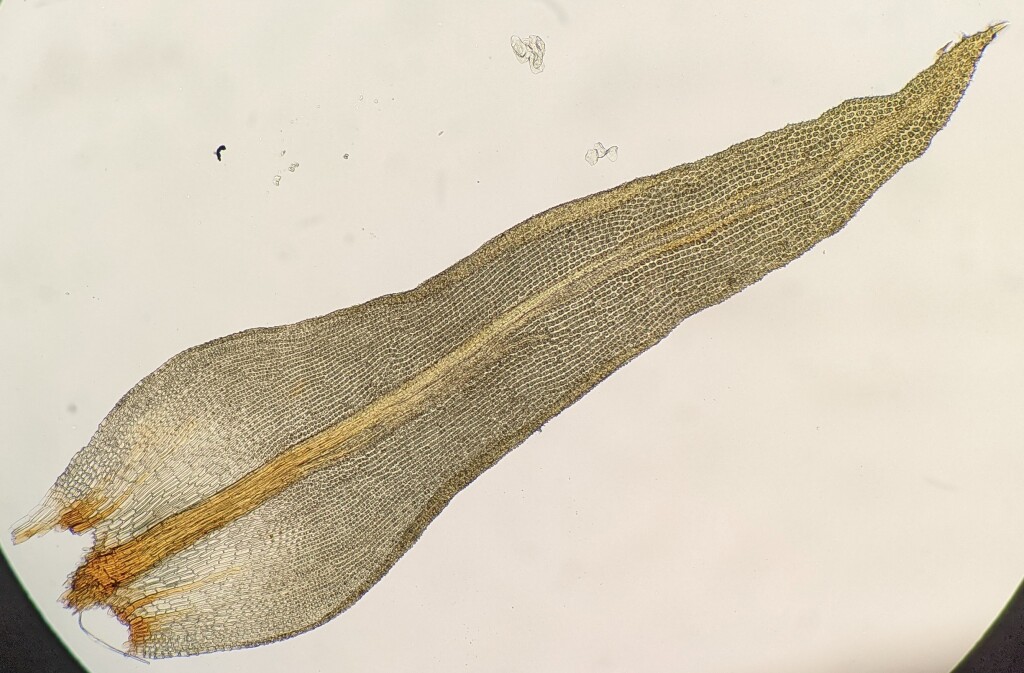Lewinskya rupestris var. rupestris
Asexual propagules absent. Tufts or mats on non-calcareous rocks or occasionally on tree and shrubs, olive-green to yellow-brown, 15–45 mm tall. Stems red, tomentose with red rhizoids toward base. Leaves wide-spreading and squarrose when moist, appressed and almost straight when dry, ovate-lanceolate, 2.5–4.1 mm long, 0.5–1.6 mm wide, carinate; apex acute; costa strong, ending below apex; margin entire, broadly recurved, without a border; laminal cells in apical half rounded-quadrate to rectangular, 7–22.5 μm long, 6.5–13 μm wide, with branched papillae, partially bistratose; basal laminal cells gradually becoming rectangular or rhomboidal, 12–82 μm long, 6–18 μm wide, nodose, unistratose. Seta c. 0.5 mm long, yellow, smooth, not clearly twisted. Calyptra plicate, with long hairs. Capsules emergent, erect, short-ovoid to short-cylindric, 0.7–2.5 mm long, straight, yellow or golden brown, sometimes shallowly 8-ribbed. Peristome single or double; exostome teeth 8 or 16, erect to spreading; endostome segments absent or 8. Operculum mamillate, c. 0.25 mm long.
VAlp. Temperate regions throughout the world. Mainly from rocky sites in the alpine zone of the Victorian Alps, but occasionally in nearby valleys at lower altitude.
 Spinning
SpinningLewinsky-Haapasaari, J.; Ramsay, H.P. (2006). Orthotrichum. Flora of Australia 51: 218–224.
